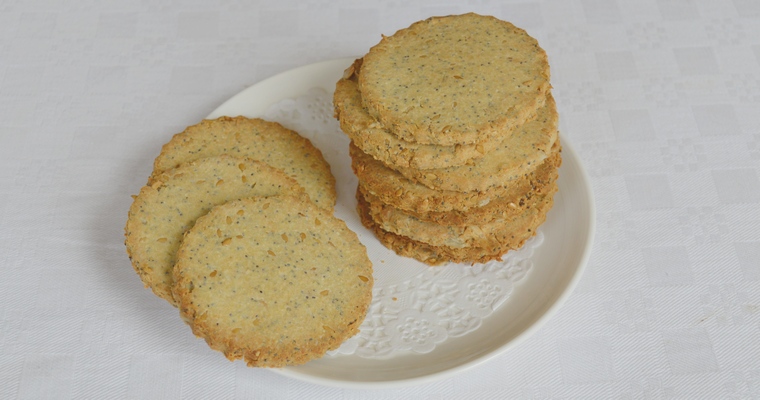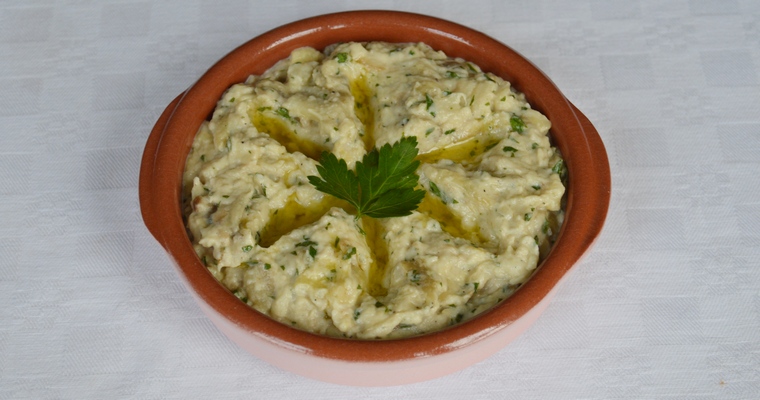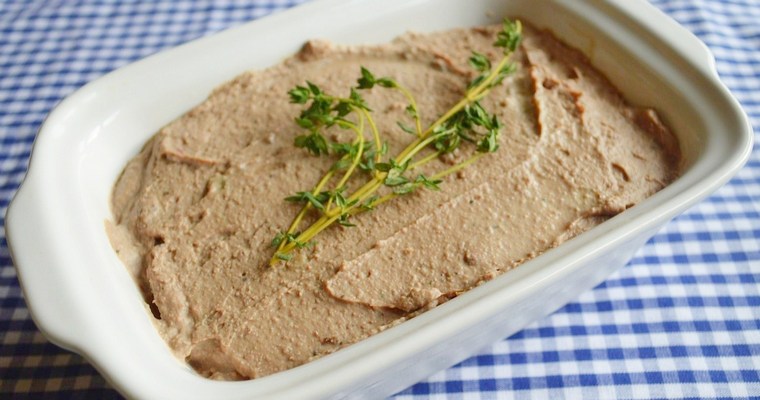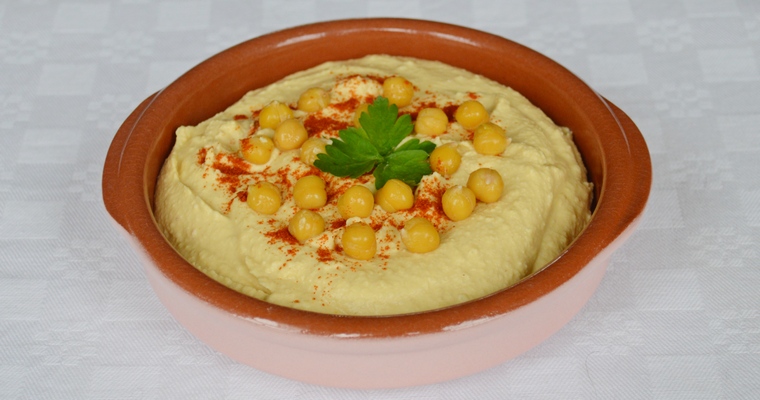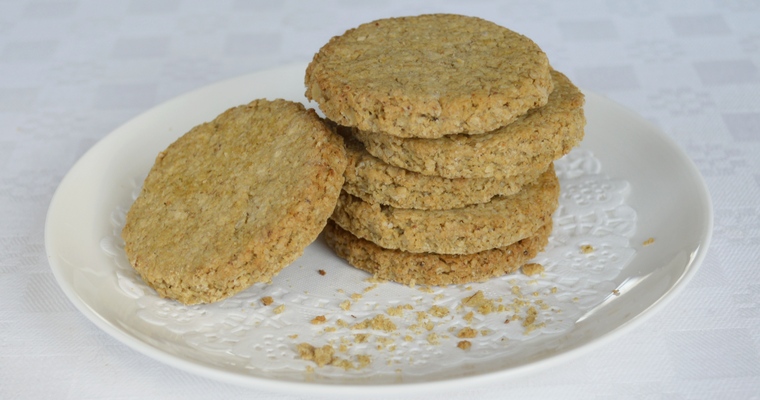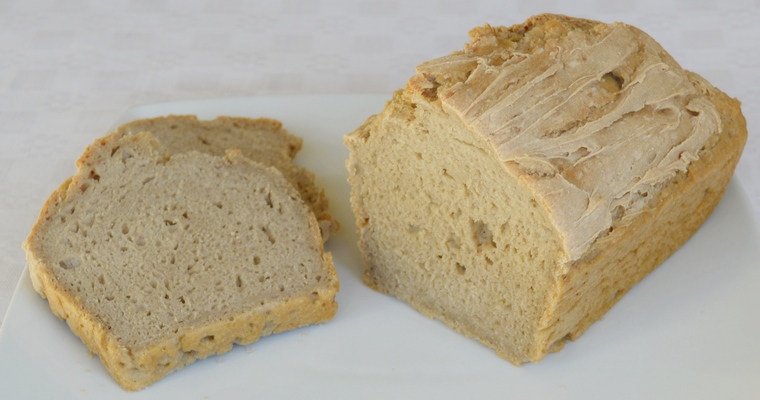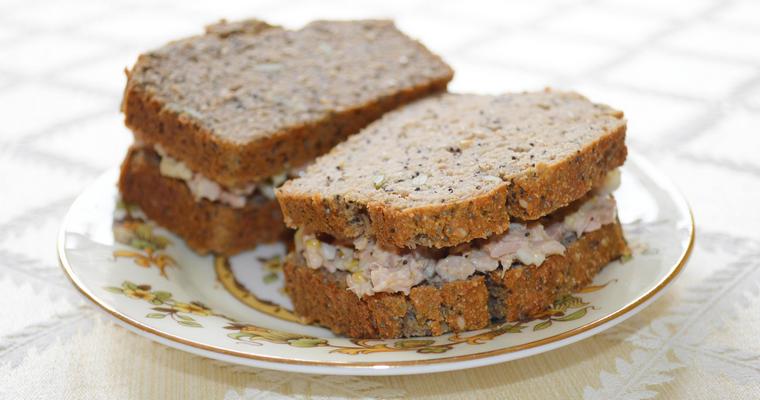Crisp, savoury crackers, perfect for spreading or dipping. A versatile Paleo version, made with ground almonds, poppy seeds, linseeds and sunflower seeds.
| Skip straight to the recipe |
01. What are crackers?
Crackers are small, thin flatbreads made by mixing wheat flour, water and fat to form a pliable dough. The dough is then rolled out thinly and cut into small biscuit-sized portions, before being baked in the oven until hard and dry. Crackers are savoury, and are usually used as a bland vehicle for strong-tasting toppings such as cheese, smoked salmon, cured meat slices and creamy spreads. However, it is common to add a complementary flourish of flavour in the form of dried herbs, seeds or cheese. Mediterranean seasonings such as garlic, rosemary and sun-dried tomatoes are particularly popular.
02. Can you make gluten-free crackers?
Crackers need to be thin and crisp, which can be difficult to achieve on a gluten-free diet. This is because wheat flour produces a sticky and elastic protein called gluten when it is mixed with water. If you remove the gluten, you affectively remove the ‘glue’ that holds everything together. The dough becomes crumbly, and does not hold together unless more liquid is added in the form of water, oil or eggs. The problem with adding extra liquid is that the dough becomes too sticky to roll out. My recipe solves this problem by adding a small amount of tapioca flour and sticky honey. Tapioca flour is a neutral-tasting starch. It becomes gelatinous when mixed with water, creating a pliable texture. It needs to be carefully balanced with a heavier protein flour like ground almonds in order to avoid gumminess, and with strong flavours in order to avoid blandness. The addition of extra virgin olive oil not only adds a delicious depth of flavour, but also stops the dough from sticking to the rolling-out surface (no need to roll between 2 sheets of baking paper, or any other such gluten-free tricks).
03. Can I replace the almond flour with ground almonds?
Almond flour and ground almonds are not interchangeable ingredients. You cannot simply replace 30g of almond flour with 30g of ground almonds in an established recipe without drastically effecting the results. Ground almonds have a large particle size, similar to coarse polenta (aka cornmeal). They are made by grinding the whole nut, skin and all. Almond flour, meanwhile, is made with blanched almonds, meaning that the skins are removed and discarded. The almonds are then ground to a much finer particle size. In order to loosen the skins for removal, the almonds are briefly plunged into scalding hot water before being run through rollers to rub off the skins. The nuts have to be completely dried before they can be ground. This process removes some of the natural nut oils, meaning that almond flour is drier than ground almonds.
As a result of these differences, ground almonds producer denser, grittier, browner and oilier results. Almond flour is more suitable for light and delicate cakes and biscuits, and therefore more comparable to wheat flour. However, the problem with almond flour is that it is prohibitively expensive, and difficult to source. I can buy ground almonds from my local corner shop, but if I need almond flour then I have to order it online from a specialist health food shop. As a result, I now make my own almond flour, as a by-product of making almond milk (for a guide to making your own almond flour, please see my post Creamy Almond Milk). If you really cannot source almond flour, then you can still make these crackers using just ground almonds and tapioca flour, but you will need to adjust the amounts. Increase the amount of ground almonds by 100% to 120g, and the amount of tapioca flour by 55% to 70g. You’ll notice that the crackers appear to be sitting in a pool or oil when you first pull them out of the oven at the end of baking. Don’t be alarmed – within about 5 seconds this will be magically reabsorbed by the crackers.
04. How do I get the right consistency for rolling out the dough?
The dough needs to be moist enough to hold together, but not so wet that it becomes too sticky to roll out. When you have mixed together the wet and dry ingredients, you should be able to press the mixture into a ball that just about holds together. If the dough is crumbly or cracks badly at the sides, then add a small amount of cold water, a teaspoon at a time, until you get the right consistency. Conversely, if the dough is too wet and sticky, add 2 teaspoons of ground almonds to 1 teaspoon of tapioca flour at a time until it dries out sufficiently. This balancing act is a matter of judgement. Despite the precise quantities given in my recipe, baking is not an exact science: ingredients, equipment and temperature introduce all sorts of unaccountable variables. The first time I made this recipe I needed to add a tablespoon of water, but the second time I didn’t need to add any extra liquid. Eggs whites are mostly water, so I assume that I used a slightly larger egg the second time around.
05. Can I add other flavourings or toppings?
You can substitute the 3-seed mix with other seeds if you like, swapping in pumpkin seeds or sesame seeds – whatever takes your fancy. Just bear in mind that adding too many large, coarse ingredients may result in a crumblier cracker that falls apart. This recipe produces a plain cracker, so you can take it off in whichever direction you like. I have my eye on a rosemary and fennel seed variant.
06. How long do crackers keep for?
Dry foods with a water content of 10% or less will naturally keep for a long time, without the need for refrigeration. This is because bacteria need water to grow, as they use it for dissolving their food. In fact, dehydration is another method of food preservation (think of sun-dried tomatoes, desiccated coconut, or strips of beef jerky). As a result, very dry crackers known as ‘hardtack’ were an important source of calories for sailors undergoing long sea voyages in previous centuries. To make hardtack, crackers were baked four times to remove as much moisture as possible, rather than the customary two (‘biscuit’ means twice-baked). One imagines this also took out most of the gastronomic enjoyment! While these crackers won’t last several years at sea, they should withstand a week in a Tupperware box.
07. What can I eat with crackers?
These crackers make a nice snack eaten plain on their own. They are robust enough to withstand being carried around in a small box, and snap neatly in half rather than disintegrating into a thousand crumbs. If I need a quick breakfast on the go, I like them spread with a good homemade jam. For a light lunch, they can be spread with hummus, pate or nut butter. For an easy mid-week supper, I make them to eat with soup.
Tips & Tricks
- Don’t add too much liquid – the dough should just about hold together without cracking, and should not feel wet and sticky. If you overdo it, add 2 teaspoons of ground almonds to 1 teaspoon of tapioca flour at a time, until you get the right consistency.
- Use a metal tray – the hot metal will crisp up the underside, so you don’t need to flip the crackers.
- Cool in the oven with the door slightly open – this hardens the crust further
Ingredients
- 60g ground almonds
- 30g extra fine almond flour (this is not the same as ground almonds, being de-oiled, de-skinned and more finely ground: buy here or make your own)
- 45g tapioca flour
- 1 tablespoon (12.5g) sunflower seeds
- 1 tablespoon (12.5g) poppy seeds
- 1 tablespoon (12.5g) golden linseeds (aka whole flax seeds)
- 1/2 teaspoon fine sea salt
- 1/8 teaspoon freshly ground black pepper
- 3 tablespoons (45ml) extra virgin olive oil
- 1 egg
- 1 teaspoon (6g) runny honey
Instructions
- Preheat the oven to 180°C/355°F. Line a metal baking tray with baking paper.
- Measure out the dry ingredients into a mixing bowl. Stir until evenly mixed using a metal spoon.
- Crack the egg into a separate mixing bowl. Add the honey and olive oil. Briefly whisk until blended.
- Pour the wet ingredients into the dry ingredients. Mix with the metal spoon, and then with your hands. Press together to form a dough that just about holds together and does not crack. You may not need to add any more liquid but, if the dough does not quite come together, add a small amount of cold water, a teaspoon at a time. Conversely, if the dough is too wet and sticky, add 2 teaspoons of ground almonds to 1 teaspoon of tapioca flour at a time, until you get the right consistency. Knead into a ball, then turn out onto a chopping board.
- Use a rolling pin to roll out thinly to a thickness of 2-3 mm. Cut out the crackers using a small-medium cutter (I used a 7 cm / 3 inch cutter). Use a palette knife to lift off the board and transfer to the lined baking tray. Collect up the trimmings into a ball, and repeat until all the dough is used – the mixture should make 12.
- Arrange on the baking tray, leaving some space between each cracker to help with browning. Transfer to the lowest shelf of the preheated oven. Bake for 12-15 minutes, until the tops are dry and crisp, and the sides are starting to brown. Turn the tray halfway through for even colouring.
- Turn off the oven, but leave the crackers to cool in the oven for 10 minutes, with the door slightly open. Transfer onto a wire cooling rack. Eat once cool enough to handle. To store, allow to cool completely before transferring to an airtight container. Store at room temperature, for up to 1 week.

